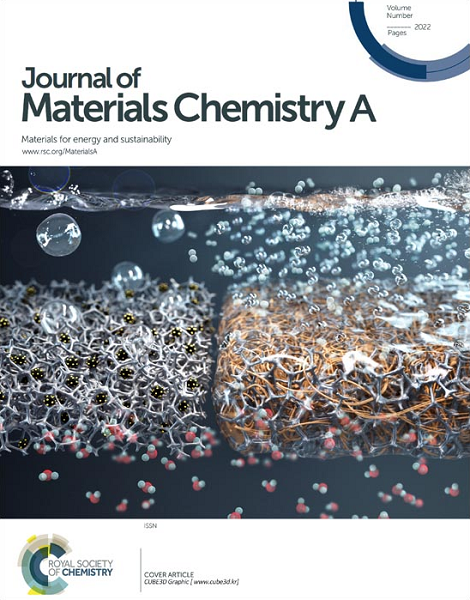一种具有调制电子结构的掺钒CuxO纳米棒阵列用于增强水储能
IF 10.7
2区 材料科学
Q1 CHEMISTRY, PHYSICAL
引用次数: 0
摘要
铜基氧化物材料的固有导电性差,限制了其在水电化学储能器件中的发展。本文采用模板前驱体原位转化和钒修饰的方法,制备了一种自支撑型掺钒CuxO纳米棒阵列AEESD。理论和实验分析表明,钒在铜位上的部分同构取代可以成功地调节原始材料的电子和晶格结构,从而驱动电子转移,从而提高电导率和反应动力学,从而提高能量储存。用V-CuxO纳米棒阵列负极构建的AEESD具有良好的电化学性能,在功率密度为8.50 mW·cm-2时能量密度为1.26 mWh·cm-2,在85 mW·cm-2时能量密度为0.71 mWh·cm-2。AEESD可以有效地为LED照明供电。这项工作为铜基氧化物晶体结构的调制如何提高其电化学性能提供了新的见解。本文章由计算机程序翻译,如有差异,请以英文原文为准。
A Vanadium-doped CuxO Nanorod Array with Modulated Electronic Structure for Enhanced Aqueous Energy Storage
The poor intrinsic electronic conductivity of copper-based oxides materials limits their development for aqueous electrochemical energy storage devices (AEESDs). Herein, we develop a self-supporting vanadium-doped CuxO nanorod array AEESD via in-situ transformation using a template precursor and modification with vanadium. Theoretical and experimental analysis illustrate that partial vanadium isomorphic substitution on copper sites can successfully modulate the electronic and lattice structure of the pristine materials, then drive electron transfer, resulting in enhanced electrical conductivity and reaction kinetics for energy storage. An AEESD constructed with a V-CuxO nanorod array negative electrode shows desirable electrochemical performance, with high energy density of 1.26 mWh·cm-2 at power density of 8.50 mW·cm-2 and 0.71 mWh·cm-2 at 85 mW·cm-2. The AEESD can effectively power LED lighting. This work provides novel insights into how the modulation of the crystal structure of copper-based oxides can enhance their electrochemical performance.
求助全文
通过发布文献求助,成功后即可免费获取论文全文。
去求助
来源期刊

Journal of Materials Chemistry A
CHEMISTRY, PHYSICAL-ENERGY & FUELS
CiteScore
19.50
自引率
5.00%
发文量
1892
审稿时长
1.5 months
期刊介绍:
The Journal of Materials Chemistry A, B & C covers a wide range of high-quality studies in the field of materials chemistry, with each section focusing on specific applications of the materials studied. Journal of Materials Chemistry A emphasizes applications in energy and sustainability, including topics such as artificial photosynthesis, batteries, and fuel cells. Journal of Materials Chemistry B focuses on applications in biology and medicine, while Journal of Materials Chemistry C covers applications in optical, magnetic, and electronic devices. Example topic areas within the scope of Journal of Materials Chemistry A include catalysis, green/sustainable materials, sensors, and water treatment, among others.
 求助内容:
求助内容: 应助结果提醒方式:
应助结果提醒方式:


